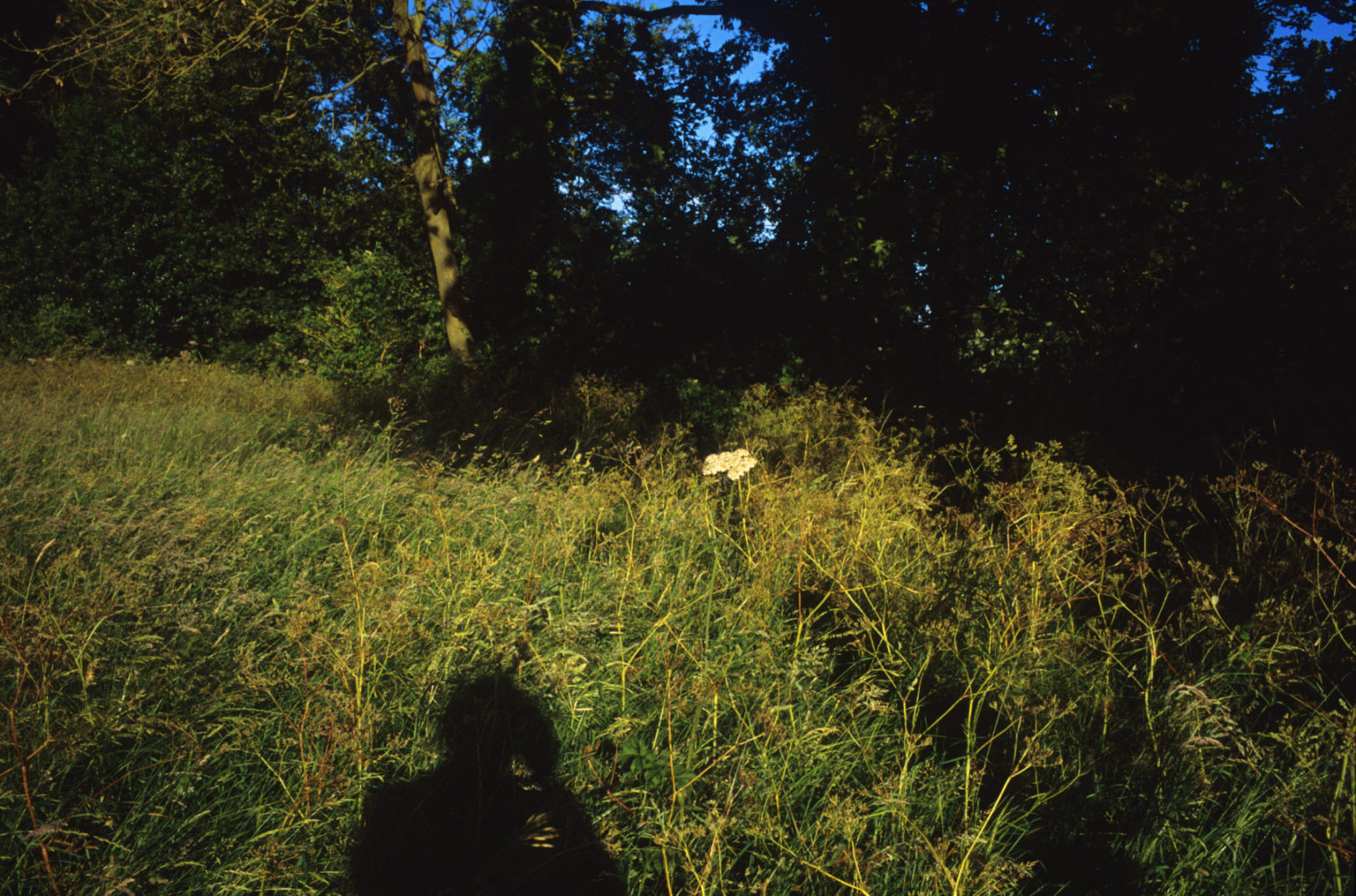Justin Partyka uses 35mm film photography to tell unique stories of places and the people and things he encounters within them.
Originally from Norfolk in the UK, Justin is currently based in the historic hill-top city of Poitiers in southwest France. He has been making photographs for twenty years, having originally trained in Canada as an anthropologist. On his return to Norfolk, Justin made his name documenting the disappearing culture of the small traditional family farm, which became his remarkable project ‘The East Anglians’, exhibited at the Sainsbury Centre for Visual Arts in 2006. He went on to photograph extensively in his native region over many years, and the multiple bodies of work he produced over this time make up his major project, ‘Close to Home’. Justin has also photographed in other parts of the UK, Spain, Germany, Canada, and the United States. Since 2015 he has been photographing mainly in France. http://www.justinpartyka.com
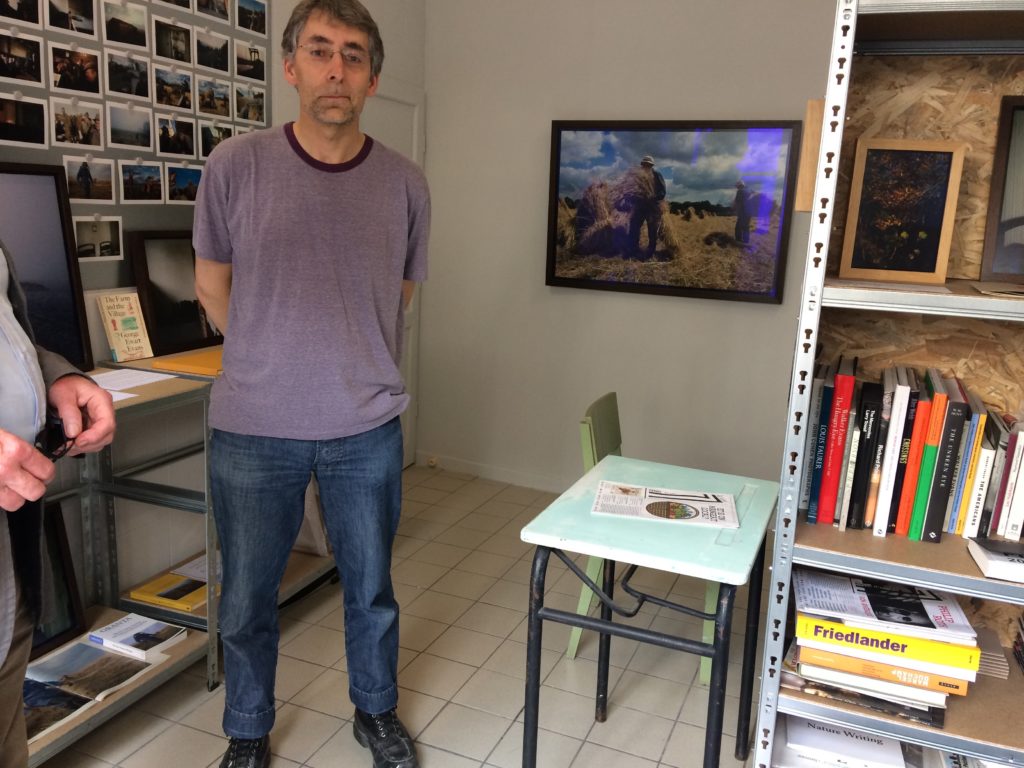
Justin’s photographs have been exhibited widely including at Tate Britain, London; the Sainsbury Centre for Visual Arts, Norwich; and the Boutographies photo festival in Montpellier. Publications include Granta magazine, the Guardian weekend magazine, and the books Field Work, Fenwomen, and Not Exactly Nature Writing.
Working in series
Justin tends to work in series, pursuing a consistent programme often place-based, or centred on a study of particular peoples and cultures. He made his name with a remarkable series of photographs of East Anglian traditional farmers, exhibited as The East Anglians, and recently published in small artist-book editions as Fieldwork (available in the shop) The project on show here is Not Exactly Nature Writing, a study of Suffolk writer and co-founder of Common Ground, Roger Deakin, author of three celebrated books—Waterlog: A Swimmer’s Journey Through Britain (1999), Wildwood: A Journey Through Trees (2007), and Notes from Walnut Tree Farm (2008).Roger Deakin died from a brain tumour in August 2006, aged 63. A few months later Justin Partyka had the opportunity to photograph the landscape of Walnut Tree Farm.
A tribute to writer and environmentalist, Roger Deakin
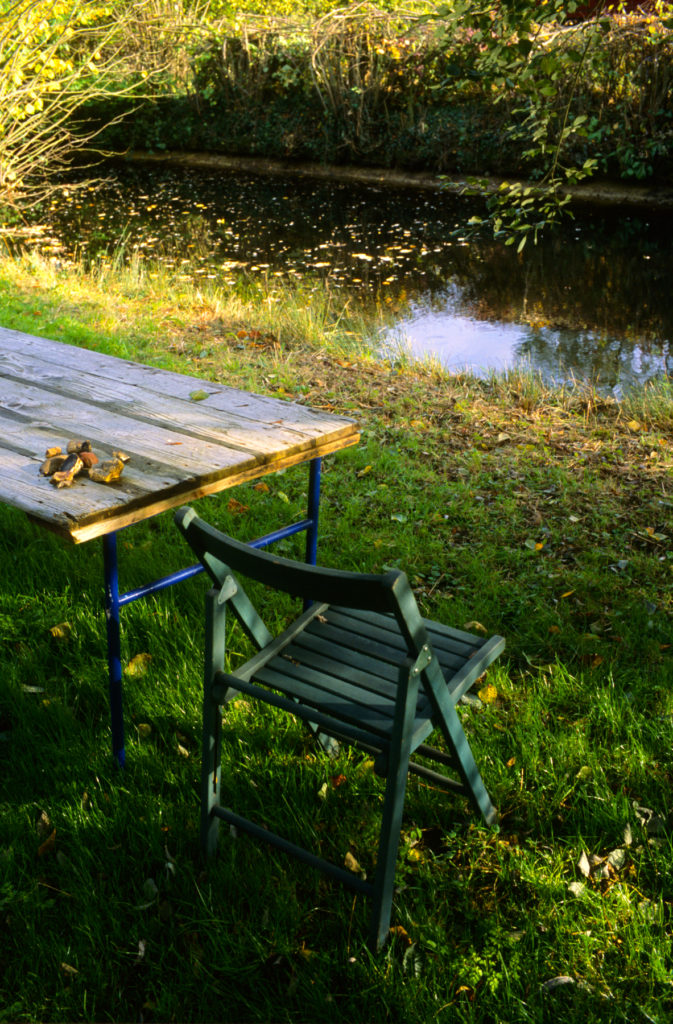
Roger Deakin lived in Mellis, Suffolk. In 1969 he bought Walnut Tree Farm, a derelict 16th century house with twelve acres of meadows on the edge of Mellis Common. Deakin stripped the house down to its original skeleton of oak, ash and chestnut timbers. Gradually he rebuilt the house around him, sleeping in a bivouac with his cats inside the huge central fireplace until he had created himself a bedroom.
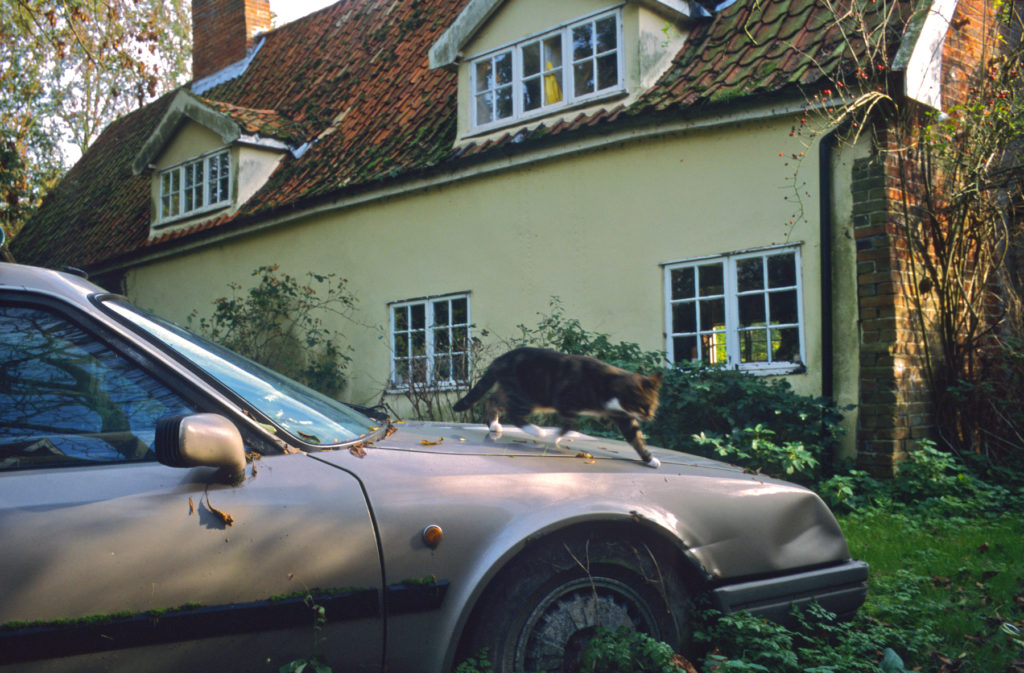
Justin Partyka’s journey to Suffolk: ‘Not exactly nature writing’
An edition of 12 archival pigment prints on Photo Rag 308 gsm paper.
‘In November 2006 I made my way to Walnut Tree Farm for the first time. Heading from the Wash across Norfolk towards Diss, I crossed the river Waveney into Suffolk and followed the winding road to Mellis. Deakin’s partner Alison had sent me a copy of a hand-drawn map that he had used to direct visitors to his home. When I arrived Alison sat at the kitchen table sorting through a huge pile of Deakin’s notebooks. These would eventually form Notes from Walnut Tree Farm. She showed me an exhibition invitation I had sent to Deakin. She’d found it on his desk. We had a lunch of vegetable soup, bread, cheese and pickled herring. Deakin’s two cats perched on the edge of the table hoping for a taste. ‘
Justin Partyka
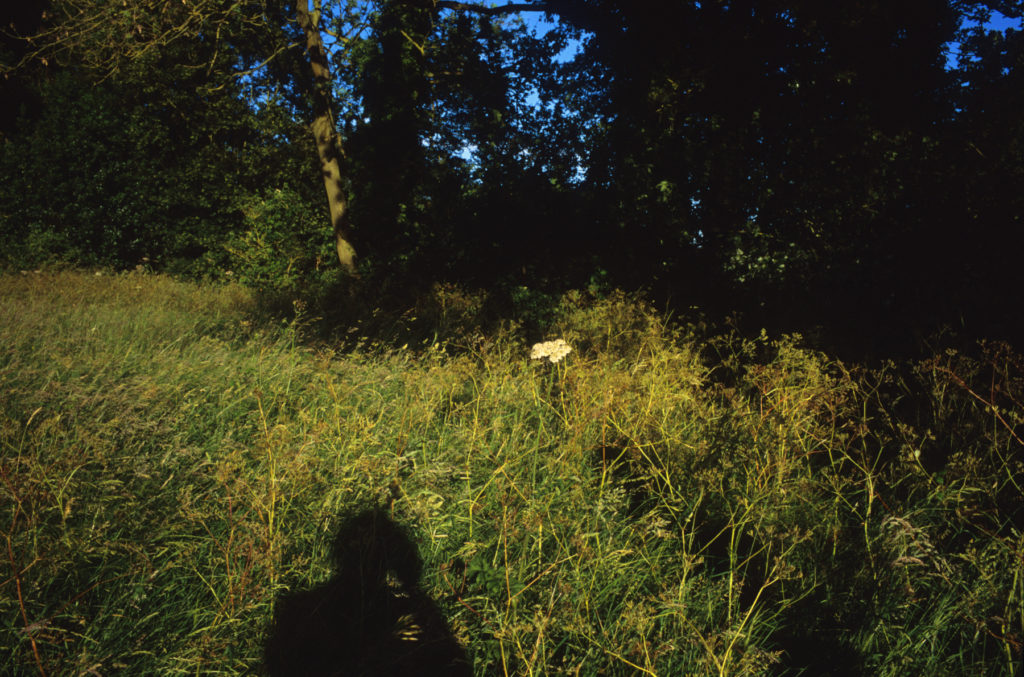
‘Mellis common stretches out a mile long. Even on a bright summer’s day the wind seems to find its way here. The thick clumps of grass, meadow flowers and weeds, sway in the breeze. A small moat surrounds the common, and around its border are trees, bushes and hedgerows. Scattered amongst them are a few houses, one remaining working farm and a 15th century church. A dead-straight narrow road cuts through the centre of the common and heads off to the next village.’
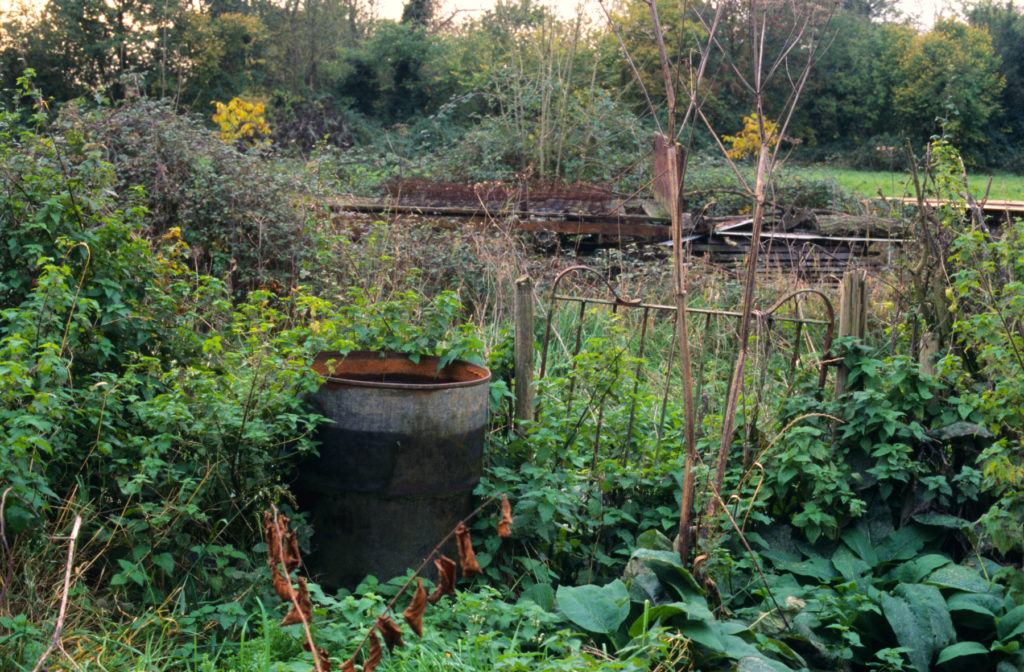
‘I spent the afternoon wandering around the garden and meadows, exploring and photographing. There was a lush overgrown wildness encroaching the landscape. And scattered around it were various things from Deakin’s daily life including shepherd huts, vehicles abandoned in the bushes, a table and chair by the moat, piles of chopped wood and his outdoor bathtub.’
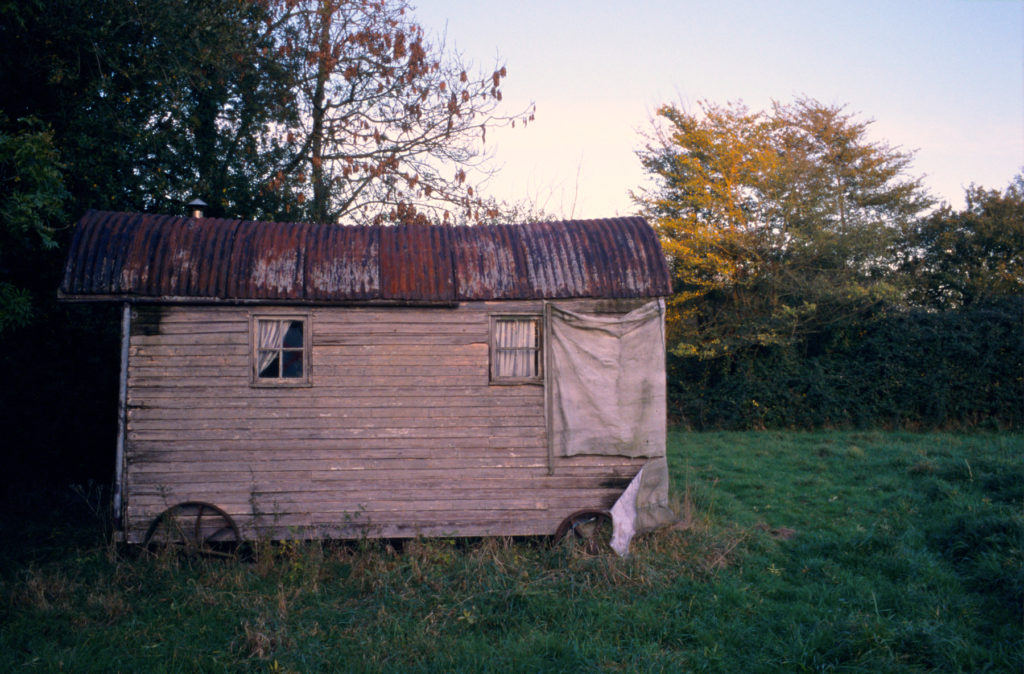
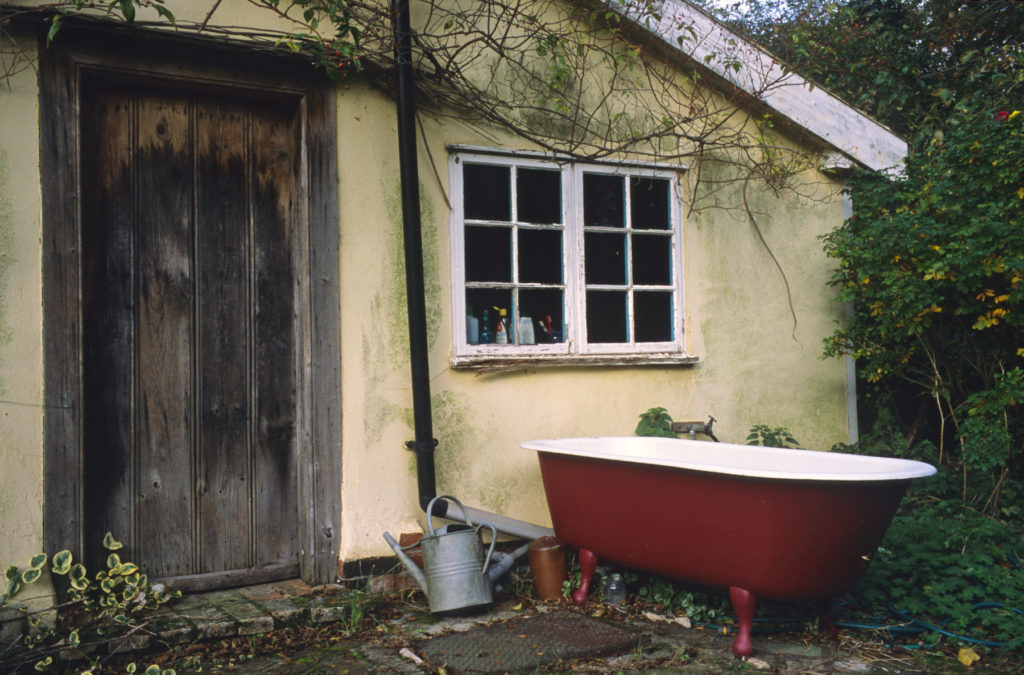
‘Some years later I returned to Mellis to see what had attracted Deakin to this part of Suffolk.’
‘Some years later, I start to go back to Mellis. I walk the common and its surrounding fields and tracks; photographing, trying to go deeper, trying to get to the heart of this place. Searching for what had attracted Roger Deakin to this little patch of Suffolk. Mellis common stretches out a mile long. Even on a bright summer’s day the wind seems to find its way here.
The thick clumps of grass, meadow flowers and weeds, sway in the breeze. A small moat surrounds the common, and around its border are trees, bushes and hedgerows. Scattered amongst them are a few houses, one remaining working farm and a 15th century church. A dead-straight narrow road cuts through the centre of the common and heads off to the next village.’
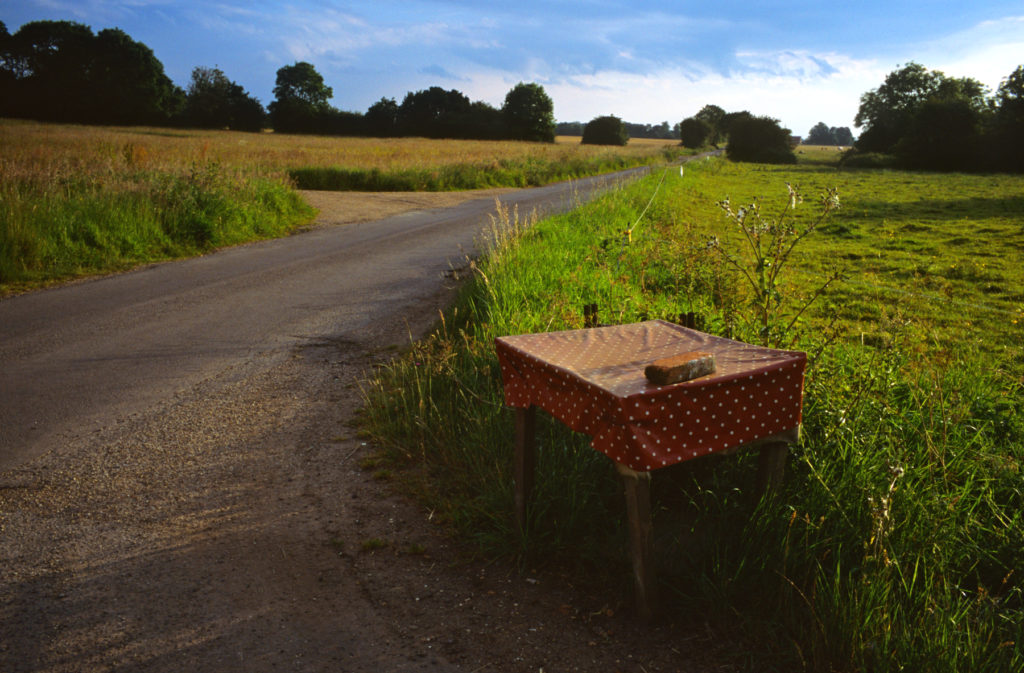
‘For hundreds of years people had lived off this common land. Their houses had been dug from its earth. They had grazed cattle, horses, sheep, goats and geese here. The trees had provided timber and wood for fuel. A windmill once stood here. There was no road straight through the common then. Instead a series of ancient droves and ways met there, linking the neighbouring commons and villages. Cowpasture Lane is one of the few that remain. It was one of Deakin’s favourite tracks to explore. Along here he made his regular excursions to nearby Thornham Woods.’
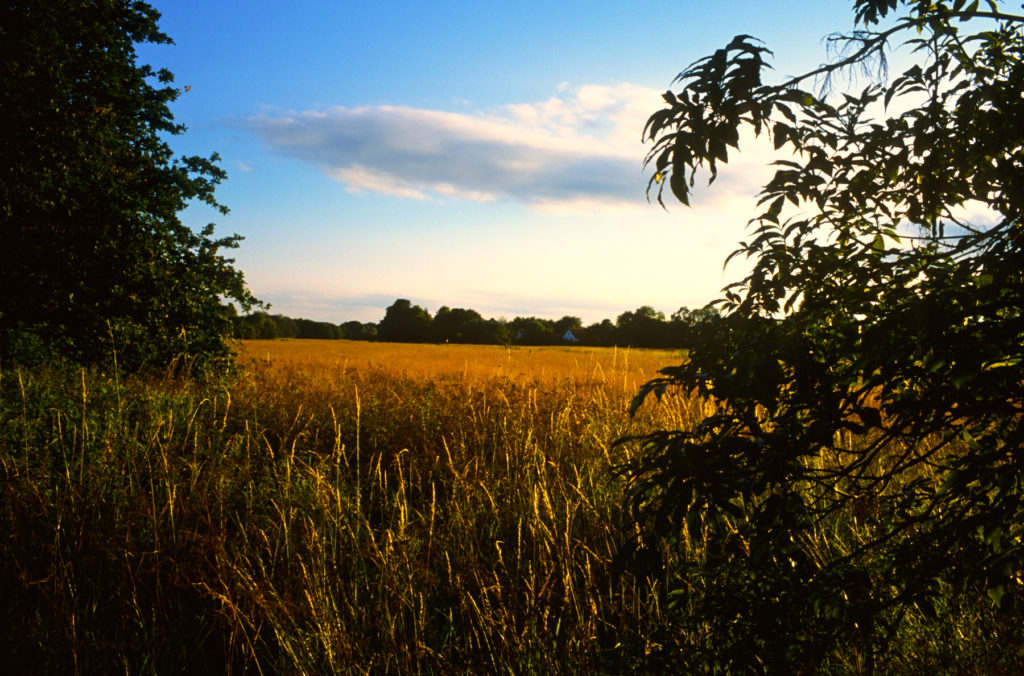
‘Deakin was an advocate for the historical importance of the lanes that led from Mellis common, highlighting their role as the main market roads to and from the village in past centuries. To walk what is left of these tracks and the windswept common is a way to step back in time.’
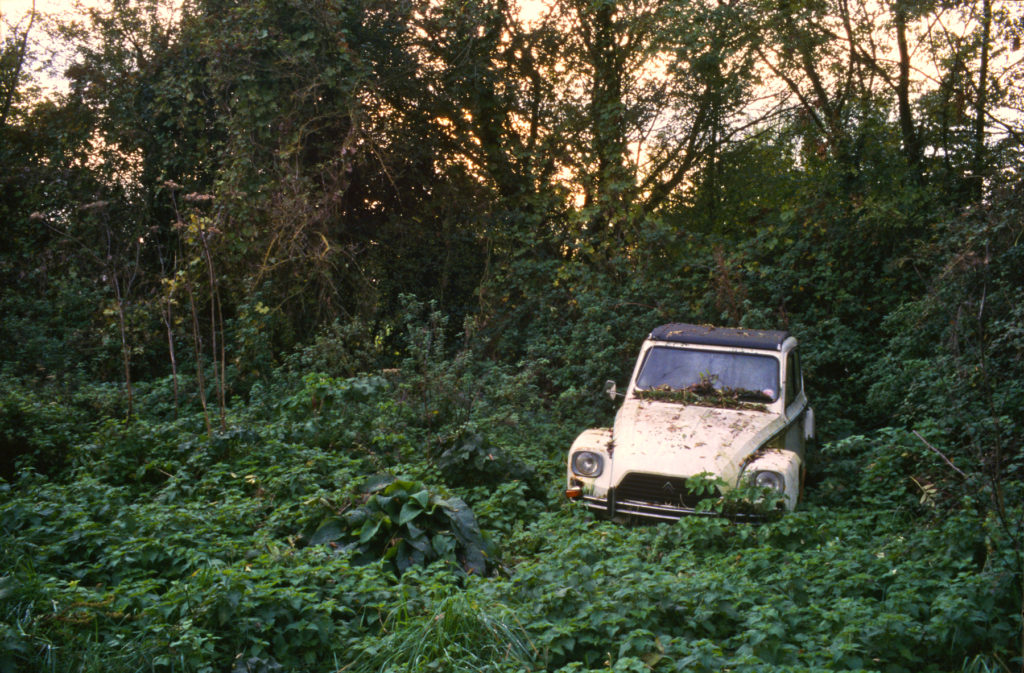
All text copyright Justin Partyka.

